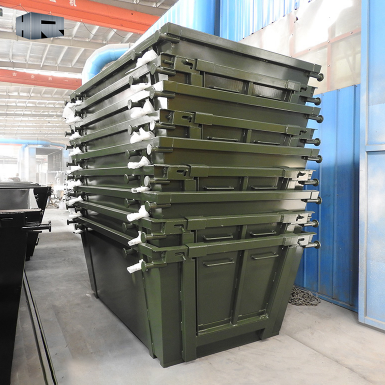
Skip bins are undeniably a practical solution to efficient waste sorting, but labeling them as the ultimate solution might be an oversimplification. While skip bins have numerous advantages in waste management, there are certain limitations and considerations that need to be taken into account.
One significant advantage of skip bins is their size and capacity. These large containers can typically hold substantial amounts of waste, making them suitable for various applications, including construction projects, commercial waste disposal, and even residential clean-ups. Skip bins encourage proper waste disposal by providing individuals and businesses with a convenient and designated space to dispose of their waste.
Another advantage of skip bins is their versatility. They can handle a wide range of waste types, including general waste, green waste, construction waste, and hazardous materials (depending on specific regulations and restrictions). This versatility allows for efficient waste sorting and ensures that different types of waste are properly segregated, facilitating recycling and appropriate disposal.
Furthermore, skip bins promote time and effort efficiency. Once full, the bins are collected and transported to a waste processing facility, freeing individuals or businesses from the responsibility of handling waste disposal themselves. This not only saves time but also reduces the physical effort required for waste management.
Additionally, skip bins help in maintaining cleanliness and safety. By providing a designated area for waste disposal, skip bins help prevent littering and illegal dumping, which can have detrimental effects on the environment and public health. They also contribute to reducing the risk of accidents and injuries that could occur if waste were scattered or improperly stored.
Despite these advantages, there are some limitations to consider when evaluating skip bins as the ultimate solution to efficient waste sorting. One limitation is that skip bins can be unsuitable for certain waste types or situations. For example, hazardous waste materials may require specialized containers or disposal methods that skip bins cannot provide. In such cases, alternative options like dedicated hazardous waste disposal facilities or collection services may be necessary.
Another limitation is the size and accessibility of skip bins. While their capacity is an advantage, it can also pose challenges in certain locations with limited space or narrow access points. Inconvenience and additional costs may arise if special arrangements such as permits or road closures are required to accommodate skip bins. Moreover, the limited availability of different sizes or types of skip bins can make it challenging to meet specific waste management needs or preferences.
Additionally, skip bins alone do not address the issue of waste reduction or recycling. Although they facilitate waste sorting, the ultimate solution lies in promoting waste minimization and resource recovery through education, awareness, and infrastructure for recycling and composting. Skip bins should be seen as part of a comprehensive waste management system that includes other waste reduction strategies.
In conclusion, skip bins undoubtedly offer a practical solution for efficient waste sorting. Their size, versatility, convenience, and safety benefits make them a valuable tool in waste management. However, designating them as the ultimate solution would overlook their limitations and the importance of a holistic waste management approach that includes waste reduction and recycling initiatives. Ultimately, efficient waste sorting requires a combination of various strategies and stakeholders' involvement to achieve sustainable waste management goals.




تعليق
(0)